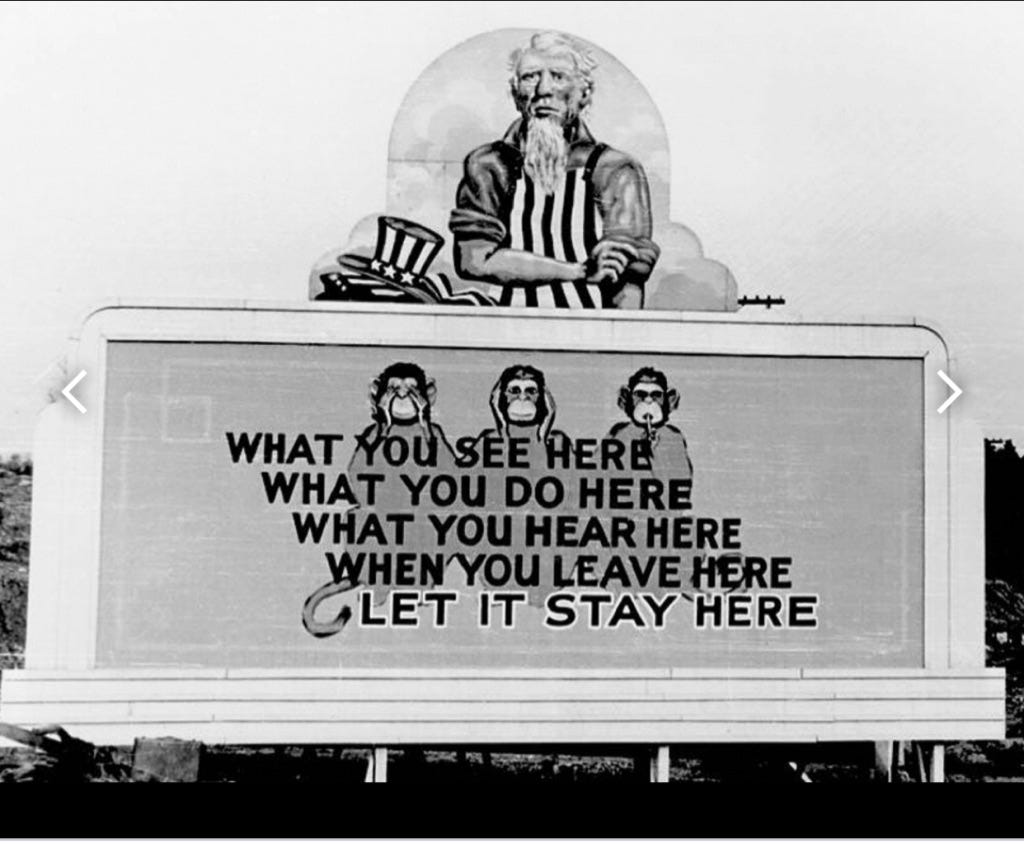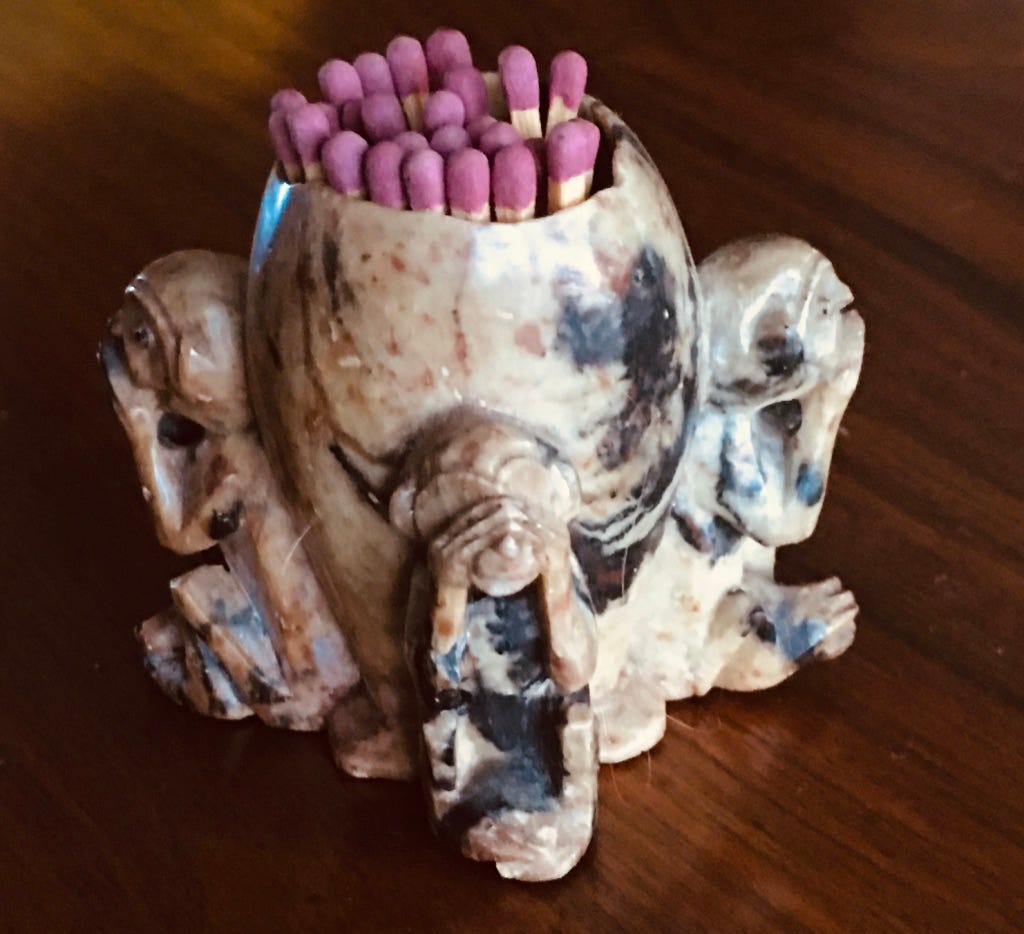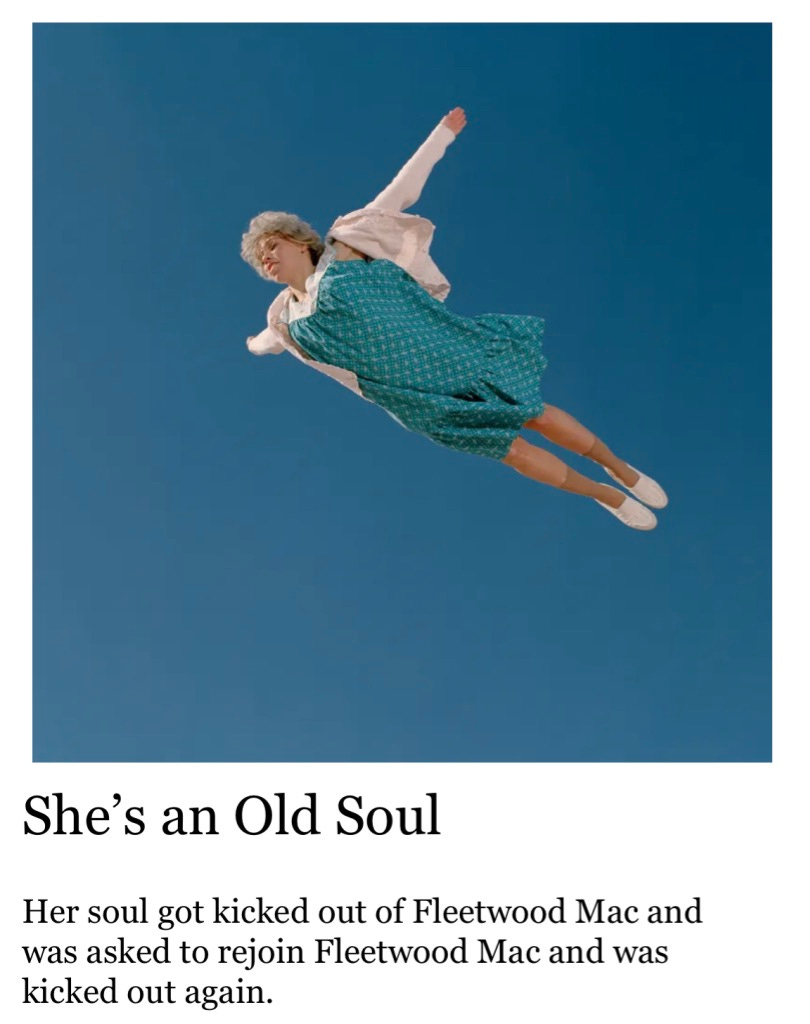Weekend greetings, and welcome to newShrink! Safe-travel wishes if you’re getting an early start on holiday visits.

It’s been a busy week in the U.S. judiciary.
Hours before scheduled execution, the Oklahoma governor has commuted the death penalty sentence of Julius Jones in a 2002 murder he has consistently denied and for which he has twice been recommended for parole. The sentence is reduced to life imprisonment with no possibility of parole.
Links to this and other stories today are listed in order of appearance at the bottom of this News Notebook.
In New York City, the convictions of Muhammad A. Aziz and Khalil Islam in the 1965 assassination of Civil Rights leader Malcom X were overturned after District Attorney Cyrus Vance, Jr., determined that they had not received a fair trial.
The defense rested Thursday in the Brunswick, GA, murder trial of three white men —father and son Gregory and Travis McMichael and William “Roddie” Bryan, Jr. — accused of pursuing and killing an unarmed Black jogger, Ahmaud Arbery. The case is expected to go to the jury Monday.
And most immediately, there’s the still-awaited verdict in the Kenosha, WI, shooting trial of teen Kyle Rittenhouse in the shooting deaths of two Black Lives Matter supporters and wounding of a third. The shootings were during escalating 2020 protests after a white police officer shot and paralyzed a Black man. At writing time Thursday night, the jury had been deliberating 23 hours over three days. Jurors so far have only asked for copies of their instructions and to review a detailed video from the scene — both of which requests this often-erratic judge has granted.
The timing and the case’s many dimensions of interest present a natural focus for this newShrink: Not only on a few of the stories and issues raised with the Rittenhouse case but a bit on that very pregnant-pause phenomenon of jury deliberations and the collective ritual of waiting through them. Then as time and space allow, the remainder of today’s Notebook will be news odds-and-ends, assorted threads picking up and following previous editions’ discussions of items and issues.
“while the jury deliberates”…
If you’ve ever attended, tried, served as a juror in, covered as a journalist or just closely watched a jury trial, you may share a bit of my take on even the most modest of courtrooms: That there is hardly more profound, complex, psychologically authentic and compelling depiction of the drama of our human experience anywhere in literature or theatre.
And while you await a jury wanting to write about it, attention broadens beyond just the unfolding case at center-stage to all kinds of other contexts, related issues, stories and pictures.
some of the headlines
(More complete shrink-wrap discussion of this case will come later, after verdict and conclusion of the trial.)
Kyle Rittenhouse Trial: Jury to Continue Deliberations as Kenosha braces for verdict. (From USA Today.)
Kyle Rittenhouse Is No Hero. (In The Atlantic, from longtime conservative Second Amendment proponent David French, who worked in the George W. Bush administration.)
Can Self-Defense Laws Stand Up to a Country Awash in Guns? (Shaila Dewan of The New York Times looks at gun issues raised and illuminated by both the Rittenhouse and Arbery cases.)
The Truth About Kyle Rittenhouse’s Gun. Farhad Manjoo of NYT brings an interesting and fresh close-up lens to the case the lead prosecutor’s closing argument made — about guns.
about those wise monkeys
To get at that title image, here’s a revisit with the little sculpture I treasure from my grandfather’s wartime keepsakes. Always the official place-for-the-matchsticks at my grandparents’ home, it’s an alabaster rendition of the “wise monkeys” theme revered in many Japanese traditions dating back to at least the 17th Century. It’s sometimes described via such Buddhist ideas as right speech, right thought, right vision; in other versions the concept is expressed as a negative, eg. “see no evil, hear no evil, speak no evil.”
In a close or zoomed look you can see that in this one, most likely by mistake in the carving, there are two “speak no evils”… and no “hear no evil.” (The running family joke is that my beloved Poppie custom-chose this odd one as appropriate for his very mouthy family full of abundantly expressed conversation, ideas and lively, um, debate.)
For me, of course the “flaw” makes this one priceless.
OK, so you might ask… what are the monkeys doing here, in this newShrink?
Most simply, something about the monkeys on the bookshelf caught my eye and connected with this week’s thinking: both about how jurors are locked away in forced silence and protected seclusion behind closed doors… and on the experience of listening for them in order to write (“speak”) about it.
Then noticing the piece on the shelf reminded me of a brief snippet of dream-image that had showed up earlier this week — instead of the more usual pesky song-lyric ear-worms! (This one is orange monkeys on golden wallpaper that I’m pointing out while coming out of the back hallway from the jury room.)
(This is the point where you know you’ve been reading, listening and tracking a story verrrry closely!)
All of which during the wait spurred browsing of interesting history and variations on the Wise Monkeys theme across various cultures, mostly Asian. (Years of the Monkey are a part of the Chinese Zodiac calendar, though of course my own Dragon is a bit more familiar.)
I’ll wind up this section with the weirdest of the uncovered monkey-material:

There’s excruciating irony of light and shadow in this trivialized wartime use by the U.S. against enemy Japan of the “wise monkey” symbol sacred in many traditions of Japanese culture and history dating back centuries… and for the purpose of urging secrecy for the atomic-bomb Manhattan Project.
These are the kinds of things people come across while juries ponder…
🦋💙
threads
Here are some odds-and-ends on current and previous news and newShrink discussion.
On the national front following this week’s approval of President Biden’s bipartisan infrastructure bill, the House has passed the Build Back Better human infrastructure bill targeting poverty and seeking shored-up working and middle classes. Now the push is on with Senate and public to connect economic dots on ways it is antidote to growing inflationary prices affecting Americans at kitchen-table level. The New Yorker takes us Inside the Democrats’ Battle to Build Back Better.
🦋💙
Two news stories this week follow recent newShrink discussions on the clinical side of psychology at the cultural level. One is a CBS News story from Sunday 11.14.21 detailing promising treatments nearing FDA approval for PTSD using psychedelic drugs. (It’s browsable on You Tube.) Studies on this treatment were described in an October piece still on the website on memory and the brain that recommended Michael Pollan’s book about psychedelics, How to Change Your Mind. (You can access the website from here by clicking on the couch image in the newShrink logo. Or anyone with a browser can go directly to the public website newshrink.substack.com.)
Following recent pieces on depression and other psychological crises, The New York Times reports: Overdose Deaths Reached Record High as the Pandemic Spread.
🦋💙
Here’s more of a thought-piece column from The Charlotte Observer that I’ll quote and comment on more thoroughly. I think it captures many prevailing currents across the political and social news front, along with the dimensions of psychology and soul-engaged values.
I Want US History To Make My Kids Uncomfortable, by Kate Murphy
Here I quote directly several of Murphy’s specific, vivid examples I find spot-on and inspiring. (They may offer some handy talking points for some of the thorny political conversations looming ahead — if not at holiday gatherings, the midterm election year begins soon after.) Parts of it might be titled something like Manifesto for Parents and Grandparents.
“It’s critical to me that the things my children read about American history make them uncomfortable.
I want them to be deeply, deeply troubled. I need them to be exposed to the primary source documents of the transatlantic slave trade. I need their textbooks to include firsthand accounts of families separated on auction blocks, pictures of the account books reconciling human bodies to pounds of molasses, instructions on how men can be ‘broken.’
I need their teachers to show them pictures of the bricks that still lie in Charleston’s open air market which bear palm prints of the enslaved children who laid them and then ask them to think about what kinds of prejudices and assumptions allowed American citizens to turn a blind eye to the human depravity that built the land of the free and home of the brave.
And, yes, I want my daughters to read Beloved by Toni Morrison. I want them to weep all the way through and be changed by it. I will comfort them and validate their pain and encourage them to take mental health breaks…
…I want my daughters to learn that these atrocities happened to humans just like us and that they were perpetrated by humans just like us. I want them to struggle to understand how so many ordinary American citizens condoned violence and depravity, just as my elementary school encouraged me to struggle to understand how so many ordinary German citizens condoned the Holocaust when we read The Diary of Anne Frank…
Murphy, pastor at a Charlotte Presbyterian Church, points to current controversies over how to teach history to our children in school as “the latest battle in our vicious culture war.” So it’s understandable, and a valuable perspective, that she positions her viewpoint (solely) in her long background “teaching, studying and preaching from the Christian Bible and Hebrew Old Testament.” She goes on to hold up these scriptural references — and figures from them such as Moses, David, and Abraham — as models for the kind of teaching of history needed today, “because Scripture isn’t propaganda.” She closes the piece by saying:
…I want my girls to struggle with American history. But it’s not because I want them to hate America or themselves. I want them to struggle with the past so that they can fall in love with all that America could be. I want them to be uncomfortable with the past so they can join us to change the future.”
Some of my thoughts…
Given the current re-framing underway, especially since the November off-season elections, of Republicans as “the party of parents” for COVID-weary suburban and upper-middle class and mostly white voters, I share and quote this because in many ways Murphy captures so much of what seems essential to actually being that party.
Because of that, I also feel the need to add some caveats. First some personal disclosure. Murphy is an ordained Protestant Christian minister leaning strongly toward the social-justice Gospel traditions. These are my own religious roots and influence many of my socio-political values — what I think of when pondering general questions of “what I’d want my children/grandchildren” to hear and learn. Adored granddaughter Miz E. is growing up in family, including Presbyterian-minister grandparents, in which she could hardly avoid being steeped in these ideals and beliefs.
So I have high regard for Murphy’s background and perspective. (And in rereading the piece have wondered if, in trying to strike a clear contrast to make her point, she might have inadvertently painted a more idealized-theocracy picture than she intended or advocates.)
In any case I have to note my objection to what to me is too tight a conflation of scriptural — any faith’s scriptural — texts with factual (and ever evolving) understanding of history. This is not to disparage, but rather to bolster, the significance and value of both scriptural texts and historical ones. Which are different.
I also take issue with Murphy’s rather casual assertion, as though a given, that scripture — again, in my view, any faith’s scripture — is (or could be) somehow propaganda-free. (And I do not want my, or any of our collective, children or grandchildren taught otherwise in school, church or temple.) Throughout history, including her Hebrew Biblical times and certainly in the present day, scripture of all kinds has of course been routinely used quite overtly and destructively to wield societal power toward secular aims. Shakespeare noted this in The Merchant of Venice:
“The Devil can cite Scripture for his purpose. An evil soul producing holy witness/Is like a villain with a smiling cheek,/A goodly apple rotten at the heart./O, what a goodly outside falsehood hath!”
🦋💙
coming soon
We’ll revisit the state of our politics in the aftermath of recent elections in Virginia and looking ahead to midterms and 2024. Meanwhile here’s an advance selection of news and views from across the spectrum (including some that make my jaws clench.)
Do Americans Really Want Normal Politics? (Bloomberg)
Think Biden’s a Bust? Check Your Cynicism. (Frank Bruni, NYT)
Democrats Shouldn’t Panic. They Should Go Into Shock. (Thomas Edsall, NYT)
Joe Biden Is Succeeding. (David Brooks, NYT)
🦋💙
I’ll leave you with a quirky piece with a bit of (sort-of) newshrink-topical humor — for any of us ever described as “old soul,” especially as children. It’s from Sarah Hutto in The New Yorker. (Will add that I find it amusing, even though I’m not at all sure I understand it, or why.) Think I mainly like the visual and the title.
meanwhile…
And, that is all I have. Talk to you next week (after the Turkey Trot race!)
🦋💙tish
… it is important that awake people be awake,
or a breaking line may discourage them back to sleep;
the signals we give — yes or no, or maybe —
should be clear: the darkness around us is deep.
— William Stafford, “A Ritual to Read to Each Other”
https://www.nytimes.com/2021/11/17/us/julius-jones-oklahoma-clemency.amp.html
https://www.nytimes.com/2021/11/18/nyregion/khalil-islam-muhammad-aziz-exonerated.amp.html
https://www.nytimes.com/2021/11/17/opinion/kyle-rittenhouse-guns.html?referringSource=articleShare
https://www.newyorker.com/news/the-political-scene/inside-the-democrats-battle-to-build-back-bettersh
https://www.nytimes.com/2021/11/17/health/drug-overdoses-covid.html?referringSource=articleShare
https://www.newyorker.com/humor/daily-shouts/shes-an-old-soul








